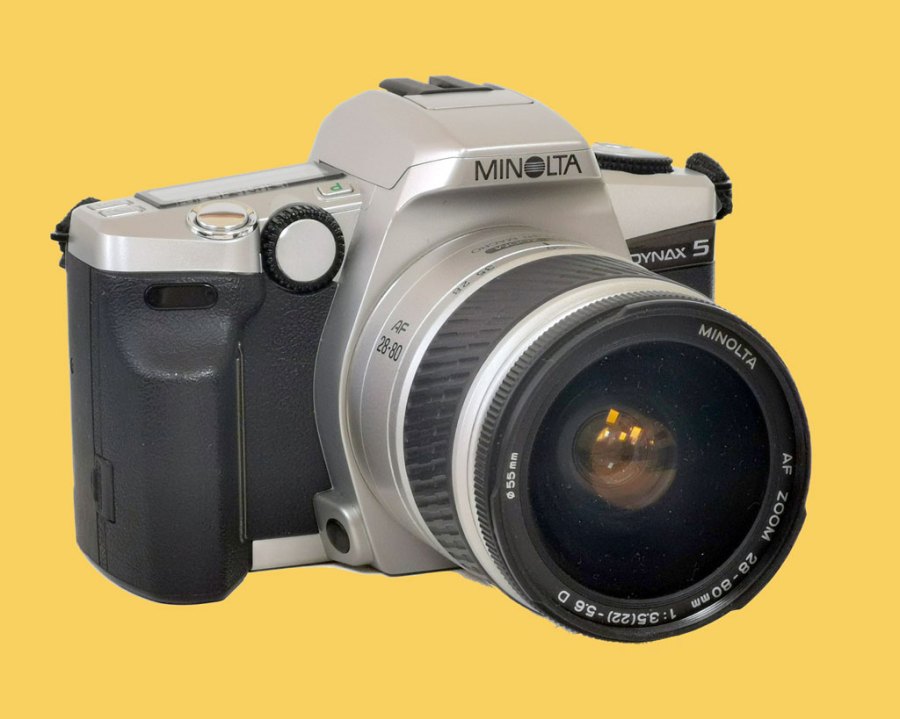Having cut my teeth on fully manual mechanical 35mm SLR cameras, I was unfamiliar with the final, fully automatic, iteration of this camera type – the Minolta Dynax 5. Perhaps rather snobbishly, I’d never really felt the urge to use one of these, but when I found one in a charity shop for a fiver I decided to give it a go.
Minolta’s autofocus SLRs were introduced in 1985, in Europe they were named Dynax, but went under the Maxxum and Alpha monikers elsewhere in the world. The first in the series was the 7000AF, in all more than 30 versions appeared, with small incremental improvements in the specs as time went on. The final model, the Dynax 60, came in 2004, at which point, like many other manufacturers, Minolta threw in the towel and went completely digital.
Although the Minolta Dynax 5 has a plastic body, and is incredibly light, it somehow manages to feel solid and well made. It brought home to me the fact that the difference between a professional camera and an amateur one is not so much the specification, but the robustness of the build. I don’t think the Minolta would respond well to the knocks and bumps that a regular professional might inflict on their workhorse camera, but aside from that, the output in terms of image quality should be indistinguishable.
Having the camera advance the film for you was a novelty. When I was a teenage photographer, motor drives were chunky units that had to be attached to an SLR body, definitely something for the pros, but here, in a body smaller and lighter than anything from the 1970s, the motor drive is tucked away inside the take up spool.
I’d got so used to winding the film on, taking an exposure reading, composing and focusing, shooting and repeating, that it came as a bit of a shock to realise that I was happy to let the camera do all the donkey work after all. I liken it to acquiring our first dishwasher soon after we got married, I’d been content to do the washing and drying up, but suddenly everything got that much easier, and I never looked back. The ability to make double, or indeed multiple, exposures on an SLR was also a feature that I enjoyed exploring.
I develop all my own films, and one task I find tricky and awkward is retrieving the film end from the cassette if it has been fully wound back inside. With a manual camera I can usually judge the moment to stop rewinding while the film leader is still visible, but motorised point and shoot cameras show no mercy and whisk the elusive tail out of reach. Imagine my delight, when I found that buried in the menus, there’s an option to leave the leader protruding on rewind.

While the Minolta Dynax 5 won’t quite fit in a pocket, it’s small and light enough to carry around without getting a sore neck, this photo was snatched during a rainy rush hour in Manchester.
See more of Tony’s photos on Instagram or search on Flickr.
Follow AP on Facebook, Twitter, Instagram, YouTube and TikTok.







